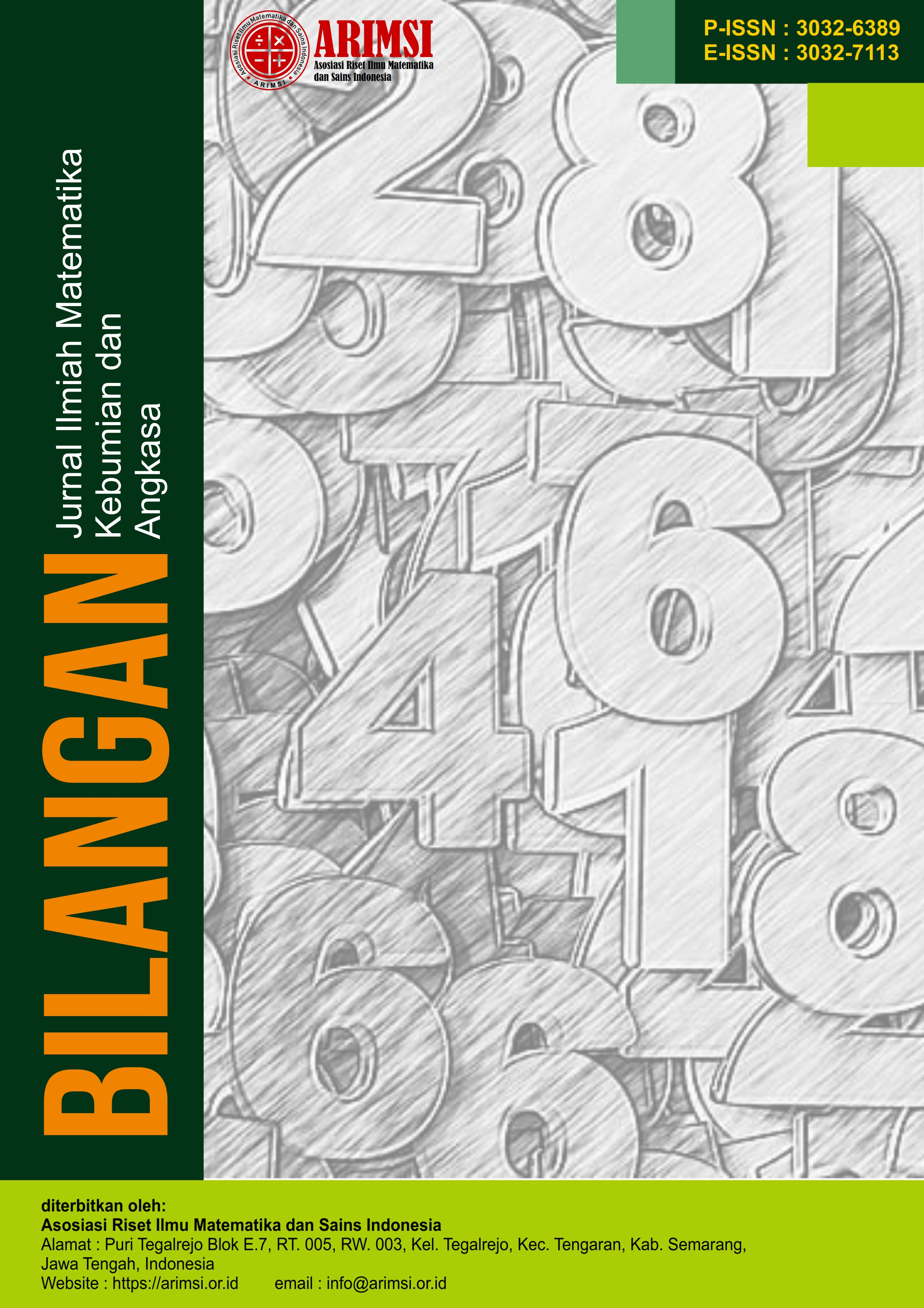Analisis Mekanisme Prosedur Kerja Berbagai Sistem Navigasi Satelit di Dunia
DOI:
https://doi.org/10.62383/bilangan.v3i3.604Keywords:
Satellite-navigation, Working-procedure, System-integrationAbstract
This study examines the working mechanisms of various global satellite navigation systems, such as GPS, GLONASS, Galileo, and BeiDou, as well as their integration potential across multiple sectors. The research uses a qualitative descriptive approach through literature review of relevant scientific sources. All satellite navigation systems operate based on the principle of triangulation using radio signals from satellites equipped with high-precision atomic clocks. The procedure includes satellite deployment, signal transmission, distance measurement, and position calculation by receiver devices.The results show that although each system has distinct technical characteristics and strategic orientations, integration between systems—through GNSS, SBAS, radar, and Earth observation technologies—can enhance the accuracy, reliability, and coverage of global navigation services. These systems offer wide-ranging benefits in areas such as transportation navigation, fleet tracking, disaster mitigation, environmental conservation, and military applications. This research emphasizes the importance of understanding the procedures and integration of satellite navigation systems to support cross-sector operational efficiency and strengthen technological resilience in the face of global challenges.
Downloads
References
Ahmada, A. I., Wahyudi, W., & Handoyo, E. (2020). Implementasi pengendali PID untuk navigasi autonomous berbasis Global Positioning System pada purwarupa Autonomous Surface Vehicle. Transient: Jurnal Ilmiah Teknik Elektro, 9(4), 574–580. https://doi.org/10.14710/transient.v9i4.574-580
Bhaskara, W. W., Sulaiman, M. A., & Eriyandi. (2024). Analisis penggunaan teknologi multi-constellation GNSS dalam sistem navigasi udara. Jurnal Manajemen Dirgantara, 17(1), 29–37.
Firdaus, R. (2020). Perancangan dan implementasi sensor GPS pada sistem navigasi multirotor. Telekontran: Jurnal Ilmiah Telekomunikasi, Kendali dan Elektronika Terapan, 8(1), 30–41. https://doi.org/10.34010/telekontran.v8i1.3069
Hanafi, I. H. (2011). Aktifitas penginderaan jauh melalui satelit di Indonesia dan pengaturannya dalam hukum ruang angkasa. Sasi, 17(2), 73. https://doi.org/10.47268/sasi.v17i2.355
Hidayat, A. (2019). Misteri satelit di luar angkasa. CV. Kaaffah Learning Center.
Hidayat, R. S. H. (2010). Pemetaan wilayah dan pengambilan data satelit sumber alam bumi dari satelit ditinjau dari hukum dirgantara. Jurnal Analisis dan Informasi Kedirgantaraan, 30–42. http://103.16.223.27/index.php/jurnal_ansis/article/view/515
Khomsin, Anjasmara, I. M., & Ristanto, W. (2020). Analisis perbandingan ketelitian posisi hasil pengukuran GNSS dari kombinasi satelit GPS, GLONASS, dan BeiDou. Geoid, 15(1), 97. https://doi.org/10.12962/j24423998.v15i1.3913
Maini, A. K., & Agrawal, V. (2015). Satellite technology: Principles and applications. Thomson Digital.
Octavia, R., & Fuad, Y. (2017). Analisis kestabilan sistem dinamik satelit pengamat bumi. Jurnal Ilmiah Matematika, 3(6), 158–165.
Omar, M. F. Z., Bookeri, M. A. M., Abdullah, M. Z. K., Harun, W. M. S. W., Bakar, B. A., Ahmad, M. T., & Ismail, R. (2023). Kaedah perataan tanah sawah berasaskan sistem satelit navigasi sejagat (GNSS). Buletin Teknologi MARDI, 38(1), 55–61.
Pertiwi, R. D., Marisa, T., Firmansyah, W., Handayani, K. N., & Rusdiyana, E. (2023). Komparasi peta citra satelit dengan hasil pemetaan Desa Gendayakan melalui program Data Desa Presisi. Warta LPM, 26(1), 40–50. https://doi.org/10.23917/warta.v26i1.1276
Rahman, A., & Triharjanto, R. H. (2013). Pengembangan teknologi satelit di Indonesia: Sistem, subsistem, dan misi operasi. IPB Press.
Saraswati, P., Mardlijah, & Kamiran. (2017). Analisis dan kontrol optimal sistem gerak satelit menggunakan prinsip minimum Pontryagin. Jurnal Sains dan Seni ITS, 6(2), 45–50.
Suwargana, N. (2013). Temporal dan spektral pada citra satelit Landsat, SPOT dan Ikonos. Jurnal Ilmiah Widya, 1(2), 167–174.
Yusuf, D. (2017). Penginderaan jauh. Universitas Negeri Gorontalo.
Downloads
Published
How to Cite
Issue
Section
License
Copyright (c) 2025 Bilangan : Jurnal Ilmiah Matematika, Kebumian dan Angkasa

This work is licensed under a Creative Commons Attribution-ShareAlike 4.0 International License.





